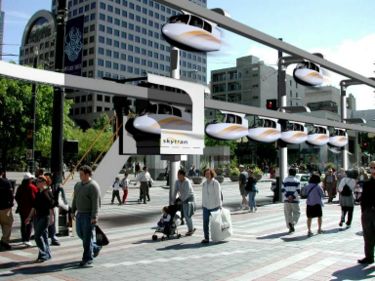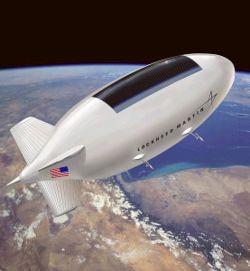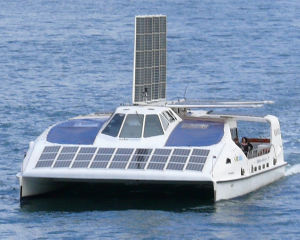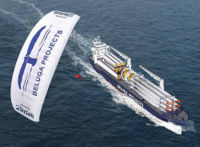Automated transport systems
| << Page in early stages >> |
|---|
 Main Page > Advanced automation > Automated infrastructure > Automated transport systems
Main Page > Advanced automation > Automated infrastructure > Automated transport systems
If the national or global infrastructure is to be automated, there obviously needs to be automated transportation. Taking ore from mines to smelting plants, taking processed materials such as machine parts to manufacturing plants, and taking goods and products to their destinations - such haulage is laborious and unstimulating work and it is desirable to use technology to free us from such tasks. Bear in mind that decentralizing the means of producing food, water, energy and machinery will massively reduce the amount of haulage to be done. When you can fabricate everything you need and most of the things you want in your backyard, there is no need for anything to be delivered to you except for raw materials like scrap metal.
Then there is the issue of transporting people. Cars currently are very inefficient in terms of energy per passenger, they harm the planet, lead to inefficient land-use in our cities and they are also extremely dangerous. Due to its everyday nature, we sweep under the carpet how risky driving really is. The annual global death toll in road accidents is an amazing 1.2 million people per year and 15 million serious injuries (source: [1] & [2]). This is the equivalent of Auckland, the most populous city in New Zealand, being nuked each year in terms of death, and every man woman and child in New York and Hong Kong being severely injured every single year.
Trains are one of the most efficient forms of transport in terms of energy per unit weight moved. They are also the easiest to automate, with some already being so, such as the Docklands Light Railway  in London.
in London.
Non-human transport systems and pipelines. Materials / cargo / delivery.
 Main Page > Automated transport systems
Main Page > Automated transport systems
Imagine you need to get across town for a party. You leave your house and walk along a tree-lined pedestrian avenue. Overhead is a light, silent monorail with pods zipping along it. After a hundred metres, you come to a stairway along the track, climb it and press a call-button, just as you would for an elevator. Within two minutes, a pod the size of an automobile, made of lightweight, strong materials, glides up to you, stops, and opens its doors. You get in and find a console with a touch-screen map of the city. You select your destination, sit back and enjoy the ride as the pod whizzes to the party at 100 miles per hour without ever stopping.
This is Personal Rapid Transit (PRT). It combines the personal size and customized routing of a car with the speed, efficiency and automation of light rail. A central computer plots the quickest route for the pod to travel from any point in the system to any other point, co-ordinating the movement of every pod in the system so that each can travel without having to stop. A city built using PRT in lieu of roads (such as Masdar City in the United Arab Emirates) would allow for quick, clean, automated, energy-efficient, point-to-point transport 24 hours a day, seven days a week. Since PRT would take up a lot less space than roads, we could reclaim the huge amount of urban land that is devoted to transport in 20th century-style cities and devote it to something more pleasing.PRT has been technically and logistically feasible for decades, but economic and political difficulties have held back its development.
PRT is a logistical concept more than a technological one. It could be implemented with a variety of technologies: rail-based or wheel-based vehicles, on-board or in-track propulsion and using a variety of energy sources. It can run at ground level, underground or on elevated tracks. Magnetically-levitated pods would allow for especially high speed and energy-efficiency.
Morgantown, West Virginia's PRT system has been successfully in operation since 1975. It now carries 16,000 passengers a day, costs only 50 cents and has a reliability rate of 98%.
As noted above, trains are one of the most energy-efficient means of moving people and freight from A to B. What energy is lost is mostly due to the friction between the wheels and and the track, and the friction between the train and the air (i.e. air resistance). Magnetic levitation (MagLev) trains solve the first of these; they have no friction between the trains and the tracks because the train does not touch the track. Instead it hovers above it due to electromagnetic repulsion between the two. MagLev trains are therefore much more efficient and capable of greater speeds than ordinary trains. MagLev trains have been in use for decades. The second energy-drain, air resistance, can be eliminated by housing the MagLev train in a vacuum. This is called vacuum-enhanced magnetic levitation (or VacMagLev, or VacTrain technology, or evacuated tube transport) and was pioneered by Gerard O'Neill, who said that VacMagLev would allow goods to travel "from New York to Orlando in half an hour... [using] less energy than... a liter of gasoline"[3].
Of all the new transport-technology options on the menu for 21st century man, VacMagLev is outstanding for its speed, its energy-efficiency and the ease of automation. One proposal by Daniel Wade outlines how such technology could be used to move goods of any kind around the world at an incredible 3200km/h (2000mph) with minimal energy. The most ambitious designs envision speeds of up to 8000km/h (5000mph). To put this in perspective, this is about ten times the cruising speed of a commercial jet aeroplane and would mean travelling from New York to Los Angeles in about 35 minutes. A network of such pipes could be set up between the world's cities, allowing goods to be moved from anywhere to anywhere in a few hours. Some proposals see this as a means of transporting people, a much faster and more efficient alternative to flying. Other designs have narrower tubes used for moving goods around.
To build such a system would require considerable initial investment. One optimistic estimate puts the cost of building a vacuum-enhanced maglev system at $2 million per mile of track ($1.25m / km) [4] for a tube big enough to carry people. It is possible that automated construction methods would allow track to be extruded cheaply by machines.
The running costs, however, would be much lower than air travel and this would justify the initial effort of construction. This is true even if we consider only the financial savings, not to mention the reduced environmental impact and the energy and time saved. It takes at least 3 liters of kerosene to move each passenger one kilometer by plane (p. 12)[5], so fuel costs are over $2.50 per passenger per kilometer[6]. By contrast, the energy requirements of VacMagLev are tiny and could easily be met by solar panels on the tubes, allowing the system to run at zero fuel cost. If 500,000 passengers are transported, the fuel savings equal the cost of construction ($1.25m / km). For the world's 50 busiest air routes  , this number would be met in just the first two months of operation.
, this number would be met in just the first two months of operation.
In July 2013, the VacMagLev concept was reawakend by Elon Musk with a design he calls the Hyperloop  .
.
One promising technology for moving freight around the world would be to create lighter-than-air, solar-powered, high-altitude, high-speed airships. At least one design for such a craft has already been worked out.
The craft is filled with helium, making it lighter than air and allowing it to rise into the sky without using energy. It is designed to fly at a height of nearly 11000m. At this altitude, air is thinner, so less air-resistance is offered to the unaerodynamic bulbous airship moving through the sky. The large top of the airship is covered with solar panels and because it flies above all cloud-cover and above 11km of air that blocks the sun's energy, it is able to access abundant solar energy, regardless of the weather. It can fly day and night at speeds of about 200km/h.
90% of international trade is moved by ship[7]. Imagine if all this cargo could be moved about for free: without no input of human labour or fuel. It would create a true abundance of transport.
An autonomous, clean cargo ship is feasible with currently existing technology. As it would have no fuel or crew costs, even a higher initial construction cost than normal cargo ships would be justified.
Ships are comparatively easy to automate, as there are not many things to bump into out at sea, and they do not have to deal with the high-speed manoeuvering that has challenged designers of autonomous helicopters and cars. There are plenty of small unmanned military boats (USVs for 'unmanned surface vehicles' in military-speak) in operation already, though this technology has not been much applied outside of the military nor on larger boats. With GPS, it is very easy for a ship to be programmed to go from anywhere to anywhere else. Loading and unloading cargo ships has become more and more automated since the 1950s and it is now possible to get containers off ships and into trucks without any human labour.
There is an abundance of clean energy available at sea. The large surface area of a ship provides ample space for sails and solar panels, and wave power can also be harnessed.
There are several ways to make ships more energy-efficient. One is to design large catamarans, which tend to use less fuel than monohulls of equivalent size. Catamarans tend to rock more than monohulls, though this may not be a problem for many cargo ships. Trimarans, if properly designed, can offer both the efficiency of a catamaran and the stability of a monohull [8].
Sail-power is making a comeback in commercial shipping. It makes commercial sense to avail of a free source of energy and sails can now be computer-controlled to automatically turn to the angle that best catches the wind.
SkySails are a bit like kitesurfing; a kite-like sail floats above the ship on cables and provides extra pull to move the ship forward. Because the sail is at a higher altitude, it is able to catch the faster winds that exist higher in the air. SkySails provide 10-35% of the energy a ship needs[9] and run completely autonomously, adjusting themselves to the changing winds.Although there are designs for large cargo ships with zero emissions and small autonomous boats with zero emissions[10] [11], there are not yet any designs for large, autonomous, zero-emissions cargo ships. Time for an open-source design project, perhaps?




